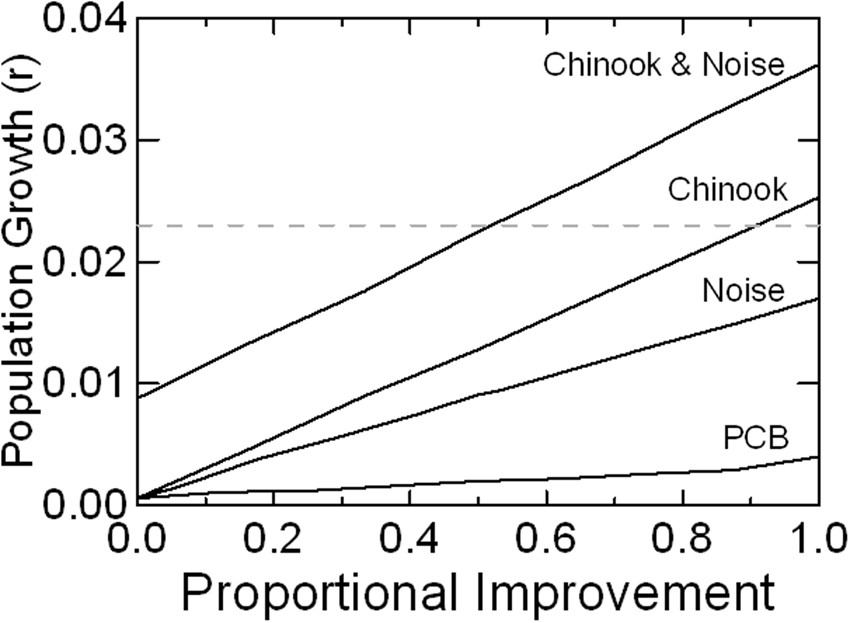Not to flog a dead horse but if all he had done in the video was make a case for La Perouse there wouldn't be much of an issue. He gets to that eventually, after a misinformed rant about how whales starving is "a crock" . I agree closures on LaPerouse, Swiftsure and Dixon entrance are not needed, but I found much of the rest of his rant counterproductive. It just plays into the stereotype the NGOs want of sport fisherman as self centered and ignorant, or at least indifferent to the issues facing the whales. This is exactly the kind of spokesperson we need to avoid.
You make some very good points on what could be done. I disagree with the hatchery ramp up, as if you want science based solutions that is not supported, but a debate for another time.
What is missing is any contribution by sport fisherman to this plan. The reductions in limits seen this year in some areas for parts of the season were long overdue given the state of chinook stocks. Only politics prevented the Conservatives from implementing reductions years ago as they were more concerned with placating sport fisherman votes than the current government which is more aligned with voters sympathetic to green groups. We are the largest exploiter of the chinook resource, and any plans or negotiations for SRKW or overall chinook survival will have to include some effects on the group that catches the most chinook. Ericl posted on another thread that it "looks like aneverybody else is to blame" situation, and that seems to still be the case. The various sport fisherman advocacy groups will need to be prepared to offer up ideas of what sport fisherman can do, not just what everyone else can do. What might they be?
For some initiall thoughts I see two themes:
1. Minimize Sport fishing vessel impacts on foraging behaviour -Proposing bubble zones not just in the current or proposed critical areas but everywhere. In reality the entire coast could be critical habitat, any area the orcas decide to feed is critical at that time. Therefore the rule coast wide could be if Orcas come in the the area, sport fisherman turn off their electronics, pull their gear and leave. This should at least be a discussion point to offer up in exchange for continued access to the new proposed critical habitat areas, not just bubble zones in those areas.
2. Increase availibility of Early season chinook. The issue for SRKW is less about Salmon availability late summer and early fall as it is availability early in the season, when their only option is Chinook. Proposals to minimize chinook harvest early in the season while preserving opportunities later in the season when fish are more plentiful. What might this look like?
- Winter fishing; A potential closure of all chinook (all salmon) fishing coast wide from Dec 1 to March 1. This accomplishes 3 things, it gives the mostly undersized fish a break and eliminates the mortality on these young chinook from C&R, It leaves any larger early season fish in the water for the whales or escapement, and it ensures the whales will have feeding grounds free from sport boats during the leanest time of the year.
- Spring fishing : continue with the limit reductions seen this year. To reduce exploitation on early season fish heading to US rivers reduce chinook limits to 1 per day on the WCVI as well as everywhere else. Perhaps until July 1 or 15. The science says a big issue for the whales is the precipitous decline of early run chinook extending the time they have to live off fat reserves. Get in front of the curve and use this as a negotiation point to keep late season access.
-Summer/fall fishing - Expand the WCVI and Haida Gwaii limits back to 2 per day as of July 1 or 15. This continues to support the summer economic activity of the sport industry and exploits the runs at the time there is probably enough for both sport fisherman and Whales.



